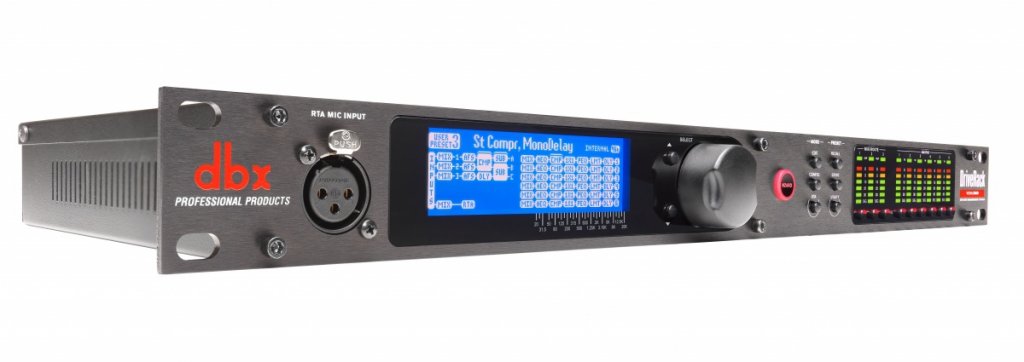
I recently replaced the Behringer DEQ2496 EQ & DCX2496 crossover I had been using to try-amp my homebuilt hybrid electrostats & Ripole subs, with a DBX Driverack Venu 360 crossover/EQ. I opted for the Venu 360 over the less expensive PA2 because I needed the Venu's digital inputs to feed in the digital out from my Logitech Transporter.
This will not be an in-depth, dispassionate, or measurement based review. I still have a lot to learn about the Venu 360, and the Behringers are all I know to compare it to. Below are my initial impressions:
Behringers are often frowned upon by audiophiles, but they served me well for many years and I found them to be dead quiet and crystal clear. The DBX may spec a little better but I rate them equally for inaudible noise floor.
The DBX’s wireless remote user interface is hands-down better than the Behringers’ front-panel intefaces. To be fair; the Behringer crossover does have a computer interface, but I couldn’t use it because its outdated serial port won’t connect to my laptop, or any laptop newer than 10 years old.
With the DBX, all functions are wirelessly controllable using a smart phone/tablet app, and I use my Ipad touch screen. The wizards make setup easy, and the control screens are intuitive and easy to use.
The Behringer’s auto-EQ is comparatively tedious, slow and cumbersome, with pink noise to endure-- downright primitive compared to the slick DBX auto-EQ.
The DBX auto-EQ is easy and fast. There’s no loud, obnoxious pink noise-- just a few rapid (2-second) tone bursts from (3) different mic positions, and the unit instantly overlays about eight parametric EQ’s to smooth out the nasties. The resulting sound is balanced and wonderful, right off the bat.
As we know; whenever you experiment and change crossover points or filter slopes, you must then re-EQ the system. With the DBX, I find it much easier to experiment and fine tune the crossover because the auto-EQ is so fast that I don’t mind re-doing it. This is a real time saver for fine tuning the system.
Whereas the Behringer DCX2496 can automatically time-align the speaker drivers, the Venu 360 has only manually adjustable time-delays (I think), which I used to time-align the drivers the old-school way, playing a test tone at the crossover frequencies and adjusting the delays until I found the constructive interference peaks and on the RTA (actually; I inverted the speaker phasing and adjusted the delays to find the negative/destructive interference dips -- either method works).
After time-aligning the drivers, and auto-EQ'ing the system with the DBX, I was playing an old song by the Supremes, and I could hear in the recording, the studio reverb applied to the voices. Just for fun, I turned off the time-delays, and Diana Ross’s voice then became one-dimensional and I could no longer discern the reverb. But when I turned the delays back on, Ross’s voice came back to life—the difference was amazing, and attests to the effect of even a few tenths of a millisecond of phasing error.
And then I discovered the sub harmonic synthesizer and, WOW! This feature should be used judiciously—probably not at all on modern recordings, but it miraculously enhances the bass on older recordings where the bass was anemic.
LOVE this DBX Venu 360!